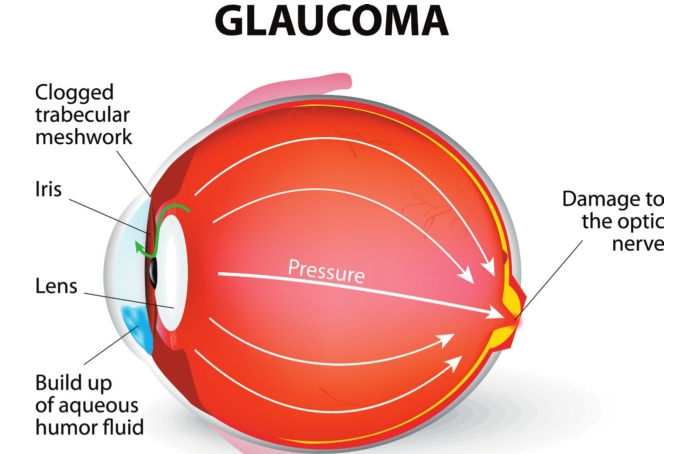LESS INVASIVE SURGERGY

Relieving eye pressure with Xen Glaucoma Drainage
The Highland Clinic Ophthalmology recently announced their advancement in surgical glaucoma procedures when Dr. Bruce Henderson became the first surgeon in the Ark-La-Tex to perform the insertion of a Xen Glaucoma Drainage Device for glaucoma treatment. The procedure allows for many advantages for both patient and physician, and is set to have a large impact on the treatment of glaucoma. Dr.
Henderson, a board-certified ophthalmic surgeon who has been performing glaucoma surgery and combined cataract/ glaucoma surgery for over 25 years, was selected as the first ophthalmologist in Louisiana to also perform the minimally invasive glaucoma surgery using the Cypass Micro-stent.
“Glaucoma is a disease where the optic nerve suffers damage over time due to the natural eye pressure being too elevated for the nerve to handle,” said Henderson. “This usually occurs with eye pressure being higher than the normal range, which is mostly genetically determined, but can be due to injury or other eye conditions. The eye pressure keeps the eye round and is created by a constant fluid production in the eye and a microscopic drainage system that sends the fluid back to the bloodstream via very fine channels.”
“There are some cases where normal pressure can slowly damage a nerve that is ‘weaker’ due to anatomy or blood supply,” he continued. “Both types are initially treated by lowering the eye pressure, either by medication or laser, which improve the natural internal drainage system that we are born with. However, sometimes these methods won’t lower pressure enough to prevent further damage. Surgical methods have been used for many years to create a new route with less resistance for the fluid to bypass the natural system and leave the eye at a lower pressure.”
Henderson, who is fellowship-trained in glaucoma at Emory University, said that, while results have been good in general, they are always looking for improved outcomes, with less invasive and involved surgery to achieve those outcomes.
“The Xen Gel Stent is a very small tube that can be inserted from an internal approach through the clear cornea. [This is done] through a needle-sized opening and carried through to exit the front fluid chamber of the eye, and come out under the thin conjunctival lining which is on the surface of the sclera (the white wall of the eye),” he said. “The exiting fluid creates a bleb, or blister, on the surface of the eye, which is unseen behind the upper eyelid, and is absorbed by the small vessels under the lining and returns to the bloodstream.”
Henderson said the main benefits to the Xen Gel Stent stem are because of the size and the material. He equated it similar to soft contact lens material and explained that this allows for less scarring and lower eye pressure.
“The primary advantages over traditional surgery are that it is less invasive surgery, involving much less tissue manipulation and incisions (which also increase scarring), a shorter surgical time and increased patient comfort postoperatively,” he said. “It can achieve low pressures comparable with traditional surgery. These advantages have not been seen with the other tube-like procedure in common usage, because that procedure requires a much larger tube, much more extensive surgery, and has had problems due to excessive scarring, which causes failure of the new system.”
The procedure is performed with topical drop anesthesia and minor sedation for anxiety and comfort. Henderson stated there is typically no, or minor, discomfort, and drops are used for several weeks to prevent rare infection and reduce scarring.
“The primary complication of all glaucoma surgery is failure to reduce the eye pressure enough, due to scarring of the new system,” he said. “We use some anti-scarring medication at the time of all glaucoma surgeries in addition to the drops afterward. Problems with pressure results that are lower than expected can occasionally occur, and sometimes causing blurred vision that might require intervention.”
Henderson stated that this procedure will have a big impact as only one of the new surgeries approved by the FDA as a stand-alone procedure.
“It is an exciting time in glaucoma treatment, because there has been a surge in recent years of new surgical procedures for those with either mild or severe glaucoma,” he said. “These fall under the general category of ‘MIGS’ – minimally invasive glaucoma surgeries.”
Henderson also has extensive experience with other MIGS procedures such as the iStent and Cypass, which are both FDA approved but only in combination with cataract surgery so far.

